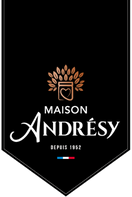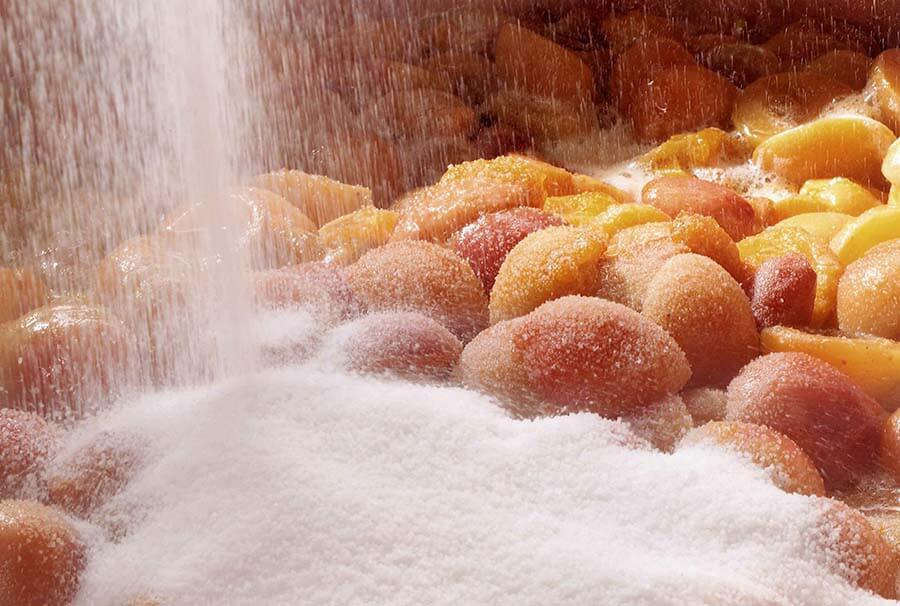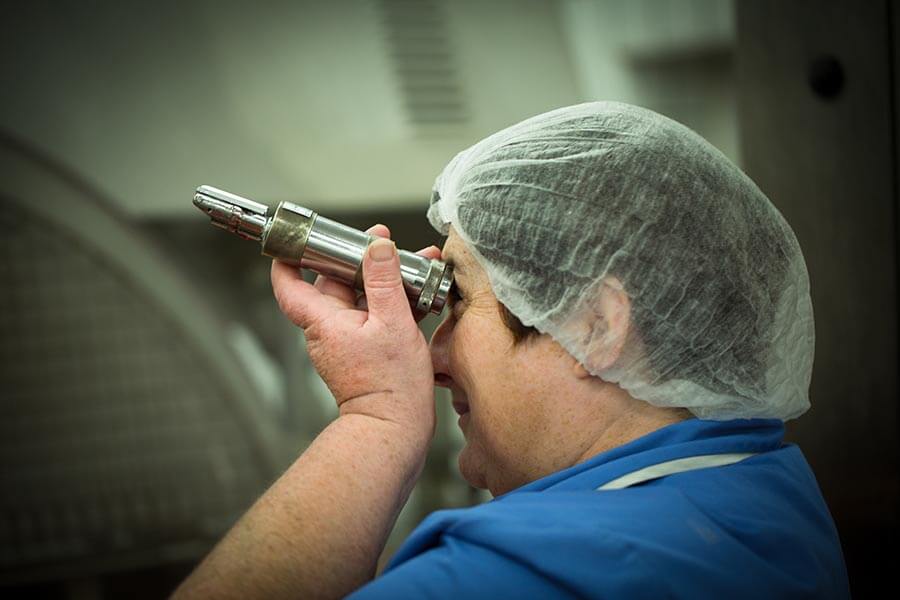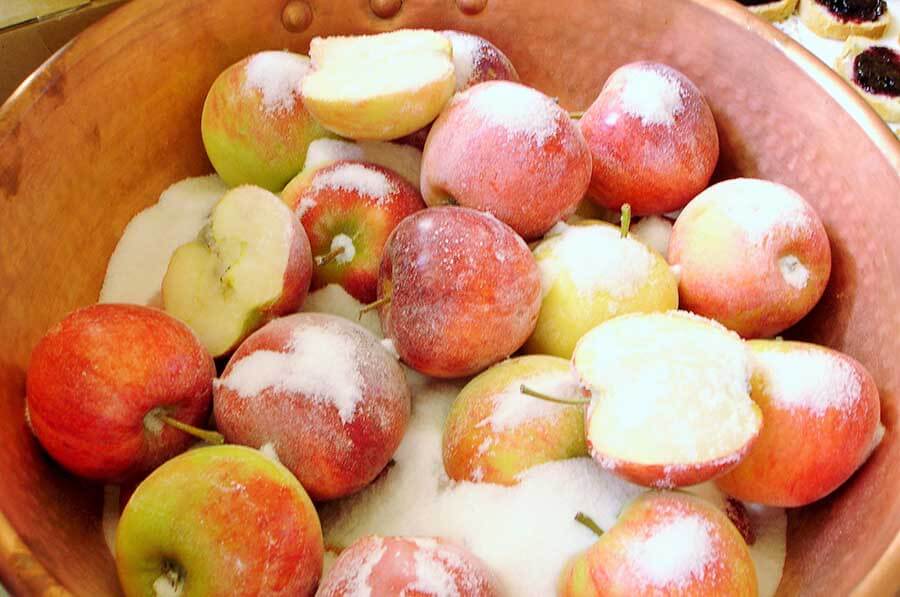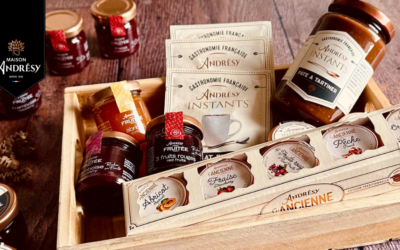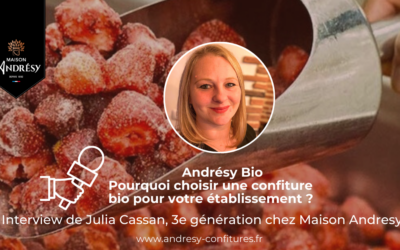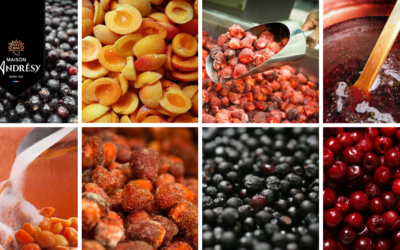The jam manufacturer Andrésy celebrates the marriage of fruit and cane sugar
06
June 2018
Sugar comes in a wide variety of forms, some derived from natural sources, others produced chemically. Each has a specific character and is used for specific purposes. The jam manufacturer Andrésy prefers cane sugar. A brief overview of sugar.
All it takes to get the day off to a good start is a few spoonfuls of jam on a piece of brioche at breakfast. Or jam on a slice of bread for an afternoon tea with the sunny taste of childhood. For the enjoyment of these millions of gourmets, Andrésy Confitures combines premium-grade fruit, natural sugar and perfectly-timed cooking in copper pans.
What does the law say about sugar and jams?
In France, the total sugar content in jam must be equal to or above 55%. This rate varies with the product: chestnut cream or prune cream, for example, must have a minimum of 60% sugar, whereas the minimum for stewed fruit is 26%. Sugar content includes the sugar in the fruit and the added sugar, and is measured with a refractometer.
Consumers can find this information on the label: “total sugar content: xx grams per 100 grams”, unless the sugar content is already indicated.
Natural sugars
Natural sugars are eaten as is or used in cooking and pastry-making by home cooks and the food industry, and in particular by jam manufacturers.
● Beet sugar is very widely used in France and worldwide. With annual production in excess of 5 million tonnes per year, France is the biggest European producer, and the area of land under sugar beet production is increasing.
● Sugar cane is initially a reddish colour. The cane impurities are removed during a refining cycle, then the sugar is processed into semi-refined or refined form. Andrésy Confitures uses cane sugar to make its recipes.
● Sugar from fruit (grape must or fruit juice) can be used to replace sugar. In jam making, its water content has to be taken into account. Longer cooking times will help evaporate the water content, but risk damaging the fruit.
● Honey is also a type of sugar. However it tends to turn brown after a certain cooking time and above a certain temperature.
« A combination of the best fruit and natural sugar »
Processed sugars and sweeteners
Manufacturers also use chemical processes to obtain sugars from natural products: fructose comes from fruit and glucose syrup comes from wheat or maize.
They also produce sugar substitutes, in response to the current trend towards reducing the consumption of added sugar while still enjoying the sweet taste. Aspartum is one of them. Its sweetening power is 200 times that of sugar.
Maltitol, agave syrup, coconut sugar and the latest to hit the market, stevia, are all natural sweeteners with a bright future. As a sugar substitute in jams, they are used in such small quantities that the fruit candying process cannot take place.
Andrésy, a jam manufacturer with an eye on the latest trends
Being a standard-bearer of French tradition does not mean remaining impervious to changes in consumer buying patterns and new trends. Andrésy Confitures’ Research and Development Department, headed by Julia Cassan, spends many hours testing recipes with new fruit or ingredients and every sort of sugar that comes out on the market. The priority remains the taste quality, the required consistency and the product’s degree of conservation.
This is why Andrésy Confitures uses semi-refined white cane sugar from La Réunion. It does not alter either the taste or the colour of the fruit, is suitable for the correct cooking time and adds a distinctive touch to Andrésy Confitures’ recipes.
Coliseurs, what new features can you add to your gourmet gourmet baskets to keep them attractive?
Accueil 23April 2024Parcels are highly appreciated by companies to honor their customers, by works councils for employees, and more generally by all those who receive them.Of all the different types of parcel, gourmet food baskets are an ever-popular category, and...
New: Andrésy Bio is now available! New recipes, new design… Why choose an organic jam for your establishment?
Accueil 16April 2024Did you know that Maison Andrésy was one of the first jam makers to market an organic jam? Long before stores and consumers became aware of the benefits of organic produce, Maison Andrésy created a tailor-made jam for Monoprix stores. This...
Wondering which fruits are best for making jam ? Maison Andrésy, your expert in fruit sourcing, gives you its selection criteria!
Accueil 6April 2024 In 2021, the Cassan family, who have run Maison Andrésy for 3 generations, decided that the motto of the family jam factory would be: "Sourcing the best of Nature to offer you the excellence of our know-how". For us, this means we're committed...
